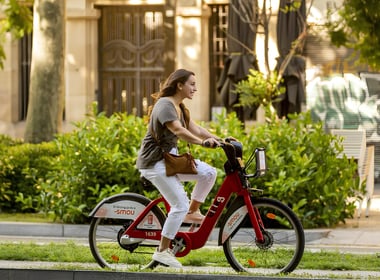İçindekiler
The Story of Park Güell
The story of Park Güell has a much more interesting beginning than you might think. In the early 1900s, Eusebi Güell, one of the most successful Catalan industrialists of the time, was deeply impressed by the garden-city concept he saw during his travels to England. This concept emerged as a solution to urban problems brought by industrialization, an approach that combined the advantages of city life with rural living.
When Güell purchased this approximately 15-hectare land on Barcelona’s Carmel Hill, he had a very clear vision in mind. He envisioned a luxurious residential area where elite families would live in harmony with nature. To turn this dream into reality, he approached Antoni Gaudí, one of the most innovative architects of the time and also his close friend.

The friendship between Gaudí and Güell had produced many projects that left their mark on Barcelona’s cultural heritage. Güell trusted Gaudí’s extraordinary vision and creativity, and he didn’t disappoint, producing a completely unique project. He created a design that masterfully combined modernist architecture with natural forms, far beyond the conventional building concepts of the period.
The History and Transformation of Park Güell
Güell’s dream was a complex of 60 villas for wealthy families. However, the project didn’t receive the interest he hoped for. The land’s location was far from the city center and transportation was difficult. As a result, only two houses were built – one being the pink house that Gaudí built for himself, which is now a museum.
The project completely stopped in 1914, and the park was purchased by the municipality in 1922, transforming it into a public park. Perhaps thanks to this “failure,” we now have one of Barcelona’s most impressive public spaces.
Park Güell’s most striking feature is the combination of natural forms with architectural design. In Park Guell, where Gaudí avoided straight lines and preferred organic forms found in nature, columns resemble tree trunks, while pathways resemble underground caves.
Parts of the Park and Must-See Places
The dragon stairs at the main entrance have become the symbol of the park. At the beginning of these stairs stands the colorful salamander statue, one of Barcelona’s symbols. The Hypostyle Room, which you encounter after climbing the stairs, was originally designed as the foundation for a planned marketplace.
The Plaza de la Naturaleza, also known as the Greek Theater, above the hall has a magnificent viewing terrace. From here, you can view the Barcelona landscape and rest on the park’s famous undulating bench.
Practical Information for Visiting Park Güell
Park Güell has an entrance fee and a reservation system, I recommend that you buy your tickets in advance, especially during high season. The park has two parts: the paid monumental area and the free general parking area. Early morning or late afternoon is a good idea for the monumental area to avoid the crowds.
How to get to Park Güell by Metro?
You can use Vallcarca or Lesseps metro stations, but in either case, you’ll need to walk a bit. Because the park is on a hill, the walk is uphill, so comfortable shoes are essential.
Spring and autumn are ideal seasons for visiting the park, as the weather can be quite hot during summer afternoons and shaded areas are limited. In winter months, you can have a comfortable visit thanks to Barcelona’s mild climate.
Park Güell Photo Shooting Points
The city view from Plaza de la Naturaleza, the colorful lizard statue and the wavy bench are the most popular photo spots. However, you can also capture impressive frames in lesser-known corners of the park. Especially the stone columned walkways and secret cave-like passages are ideal for interesting photos.
While visiting this beautiful park, you will see how the vision of an architect and a dreamer turned into a work of art that stands the test of time. A failed housing project has become perhaps one of the most valuable cultural heritages of Barcelona.
If you bypassed Gracia and came directly to Park Güell, now continue walking down and explore Gracia.
Park Güell
Website
https://parkguell.barcelona
Visiting Hours
Weekdays: 09:30 / 17:30
Weekends: 09:30 / 17:30
Address
Gràcia, 08024 Barcelona








